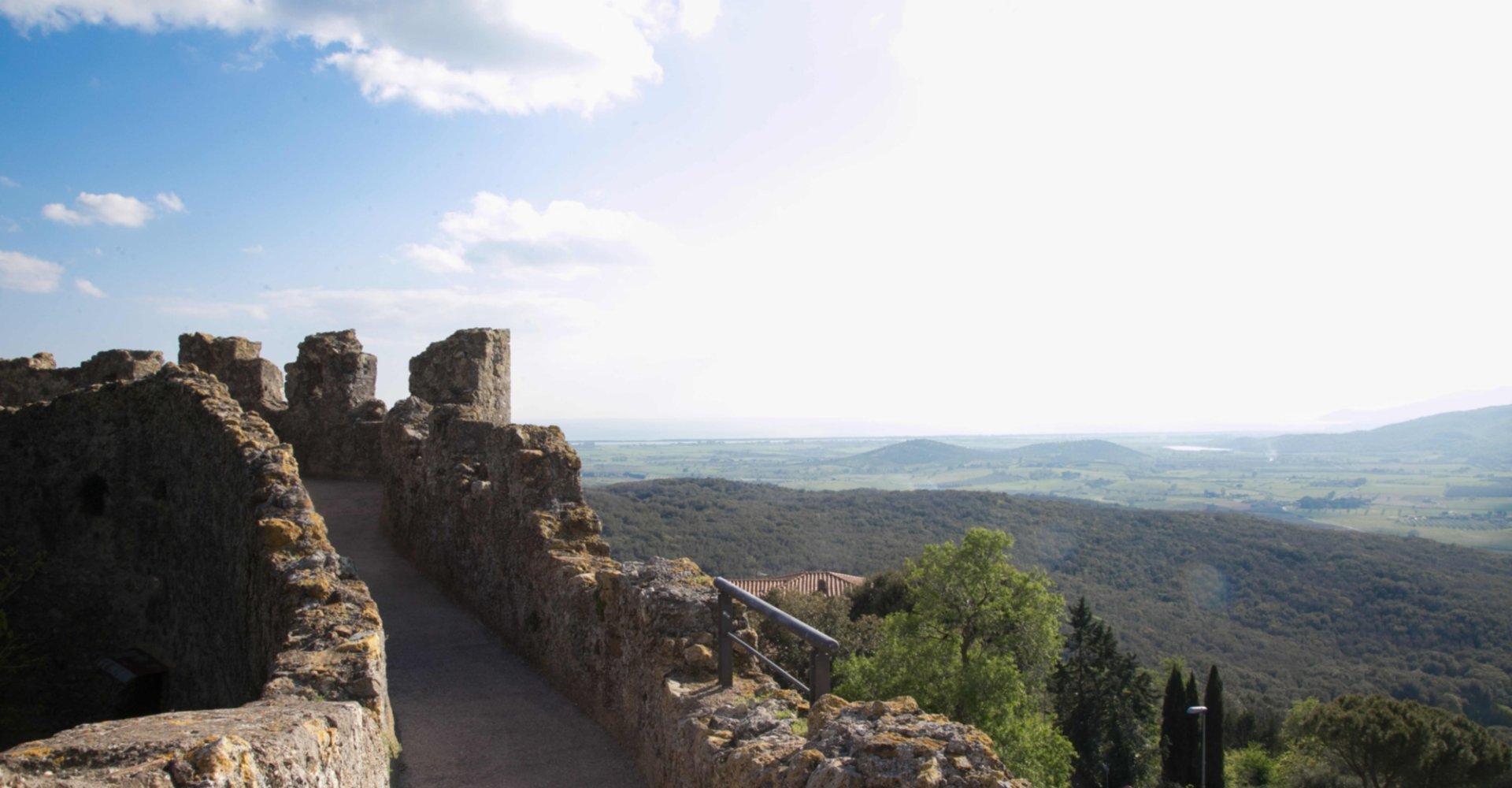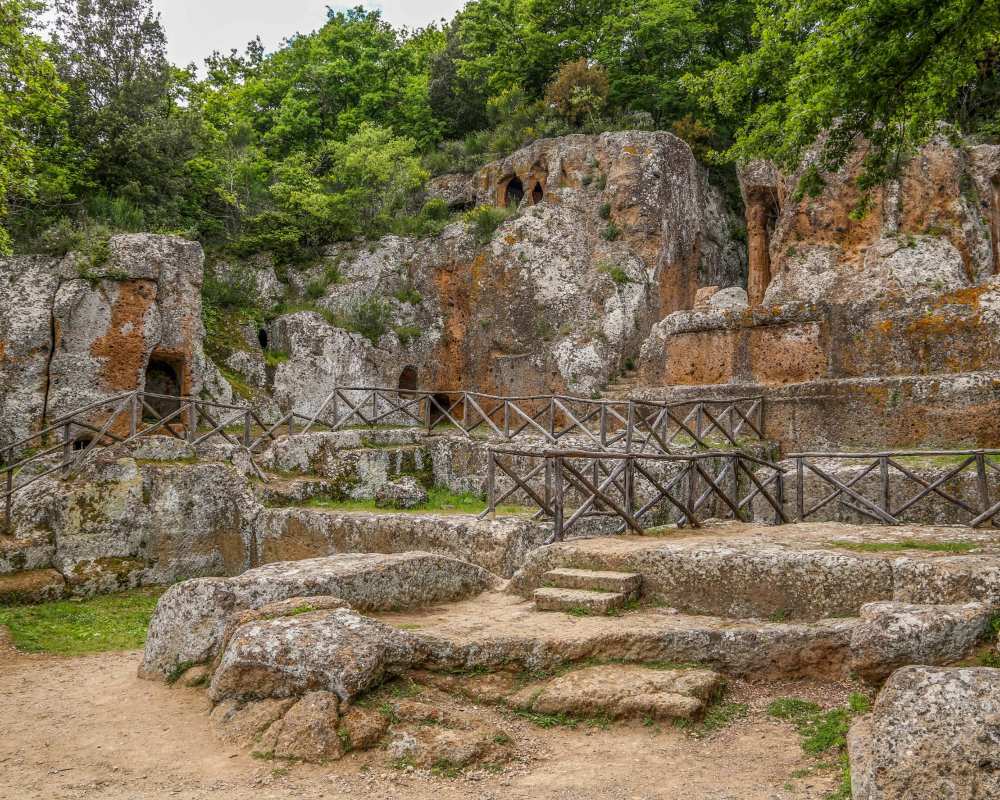
A plunge into the past in nine stages tracing civilization, urban planning and architecture of Etruscan cities in the heart of Tuscany
Discovering Etruscan monuments in Tuscan villages is a unique experience. Starting with the beauty of Mount Argentario, a promontory which dips steeply into the sea, stands Porto Ercole, a seaside town that owes the origins of its name to the Etruscans. We pass by Capalbio, the last town in Maremma, the fortified medieval village strategically located on the coastal plain.
We then land in the "cities of tuff": Sorano, Sovana and Pitigliano; the latter, known as "little Jerusalem" due to the ancient presence of a Jewish community, is home to the civic archaeological museums and shows all its splendor not only in the medieval aqueduct but also in the "Alberto Manzi" open-air archaeological museum. Inside you can visit a reconstruction of an Etruscan dwelling and rock necropolis from the Archaic and Hellenistic periods. In Sovana, not to be missed are the vie cave, mysterious passages in the tuff rock to be explored on foot, between play of lights and fairy-tale primordial views.

A short distance from the "Cavone" via cava, visitors will find the spectacular Ildebranda Tomb, carved into the tuff rock, one of the most important funerary monuments in Etruria. Continuing towards north-west, the route reaches Roselle, where time seems to have stopped: with a little bit of imagination, a walk around the archaeological area will bring visitors back in time to one of the most representative Etruscan cities; as well as in Vetulonia, with its splendid necropolis and tumuli, which blend harmoniously with the landscape.
Heading towards the north of Tuscany, visitors encounter the wonderful Casentino forests and two other Etruscan sites of great importance, especially from a spiritual point of view. Where there used to be an Etruscan sacred site dating back to the 5th century B.C, today the Romanesque Pieve di Socana, in Castel Focognano, stands; while along the slopes of the Falterona, a body of water sacred to the Etruscans, the Lake of the Idols, has unearthed numerous votive statuettes that are preserved in part at the Casentino archaeological museum in Bibbiena.
Last stop, to finish the itinerary surrounded by beauty, the wonderful hills of Carmignano and the foothills of Montalbano, where stands the archaeological site of Pietramarina, an ancient Etruscan settlement that, due to its elevated and strategic position, allowed it to control the surrounding territories.